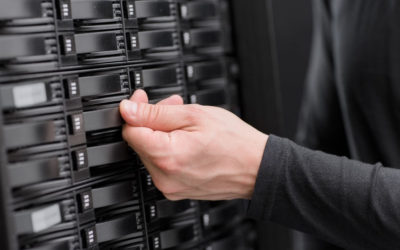It’s that time of year again, when the analysts analyze and publish the Gartner Magic Quadrant insight into products and solutions ahead of a calendar year budget cycle. This is for good reason, although Gartner recommends against buying solely based on what is farthest top and right, stating that niche and visionary products may be extremely well-suited for a company’s needs. Veeam Software is an unusual participant in the quadrant, given that they entered it in the visionary section, and were the first company to do so with only a virtualization offering, being “built for virtualization.” All the other companies had solutions to protect physical environments or were created to protect physical and then bootstrapped or developed into the virtual space.
One of the items that rings true to customers of all sizes is the ease of implementation and use of the products. Complex implementation and management/maintenance of products translates to more overhead and dollars (e.g., higher TCO, higher risk) and has remained a pain point for many products. Again, Veeam has remained the exception, with ease of implementation and use being a core consideration for customers. Implementation costs are lower, ongoing realized costs remain lower, yet satisfaction and the “wow, this actually works” factor remains high.
Since their first appearance on the Magic Quadrant, Veeam has continued to innovate and be thought and product leaders in the market. Veeam has been a “backup and replication” product since early on, while most products were simply labeled “backup and recovery.” I always found this a bit odd, because if you couldn’t recover a backup, then what good was it? The bigger “a-HA!” for Veeam came when customers learned they could actually recover entire virtual machines—successfully, mind you—within minutes. Gartner took notice.
Fast forward a few years, and cloud offerings for offsite data storage became the new buzzwords. Cloud capabilities became a new measure in the MQ. Why should companies spend the money on Disaster Recovery equipment and multiple locations when they could easily write data to the “cloud” and let the “cloud people” deal with it? The major “cloud” companies began clawing and scratching and innovating, but for many customers, it still comes down to a few items: cost, ease of use, and reliability (we’ll throw service and support in there as part of it.) Customers quickly realized the “cloud” can be a bit, well, cloudy. It is easy to have a “throw more storage at it” attitude, because that generates revenue. Many customers suffered with costs related to restoring data, and the help they received from the cloud provider, especially if the bandwidth or data limits had been met or exceeded according to contracts.
At Global Data Vault, we realize the pain points of something that should be easy and cheap, and maybe a little magical. We adopted the Veeam messages of “it just works” and “always on” and added our own: It’s always our problem. We make offsite data storage for both backed up and replicated virtual machines easy. By utilizing Veeam Software, one of Gartner’s leaders, we guarantee service and delivery our customers expect, all with simple and transparent billing and reporting. With lower overhead and lower TCO, Global Data Vault excels in satisfaction and providing a truly customer-centric cloud experience.
More Backup and Disaster Recovery Posts
Can IT learn from BP disaster in the Gulf?
As we build more complex systems like the Deep Water Horizon Rig, the potential for things to go catastrophically wrong increases – dramatically. As industries and products mature they do become more stable, examples are cars and atomic power. But oil exploration and...
Business Pandemic Plan – Are You Prepared?
On June 11, 2009, the World Health Organization (WHO) raised the worldwide pandemic alert level to Phase 6 due to the spread of the H1N1 virus. The virus, also known as Swine Flu, has rapidly established itself and will continue to persist in the coming months as the...
NYSE in Chaos
A computer glitch stopped trading for 40 minutes in more than 200 stocks at the New York Stock Exchange today. One of the key computer servers used to conduct trading lost connectivity to the trading network. As a result, stocks such as General Electric and...
Terrorist Attacks – History Repeats Itself
In July of 1993, eight individuals were arrested and later convicted for plotting terrorist attacks on key sites in Manhattan. Such key sites included: the St. Regis, the Waldorf-Astoria and the UN Plaza hotels, as well as the Holland and Lincoln tunnels. VP of...
Airport Insecurity – Business Travelers Beware
As business begins to return to travel, there’s so much to consider when keeping yourself and your belongings safe. Working in airports has always been common practice, as is eating and drinking while working, but now there’s an additional layer of concern for...
Carbonite Data Loss – Our Analysis
The Boston Globe and other outlets reported this weekend that Carbonite lost data for 7,500 customers. Many of these customers were able to make fresh backups before they suffered any real losses. Some, however, were not. Those who were not recieved apologies and...
What Happened to Ma.gnolia? The Autopsy
Larry Halff’s social media website ma.gnolia.com is gone. He spent four years during which he, “devoted most of my time, energy, and love” to building the site. Users of the site had built intellectual and social capital through the bookmarks, groups, and connections...
Business Continuity Planning – Internet Security
Practicing Internet Security Security is an issue for almost every computer user, especially those who frequently use the internet. Computers have become an integral part of everyday life and act as the lifeblood for many critical business operations. It doesn’t...







0 Comments